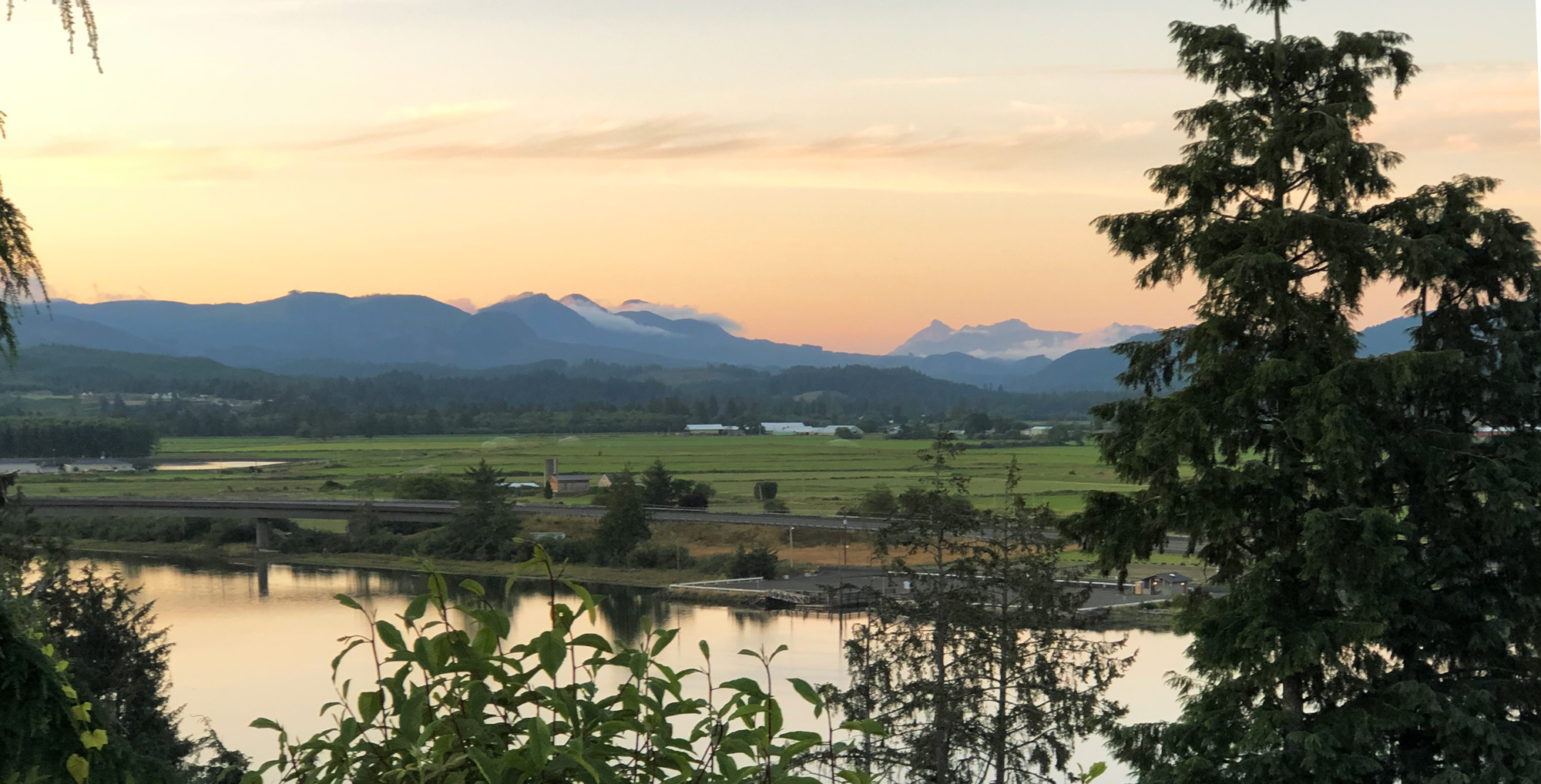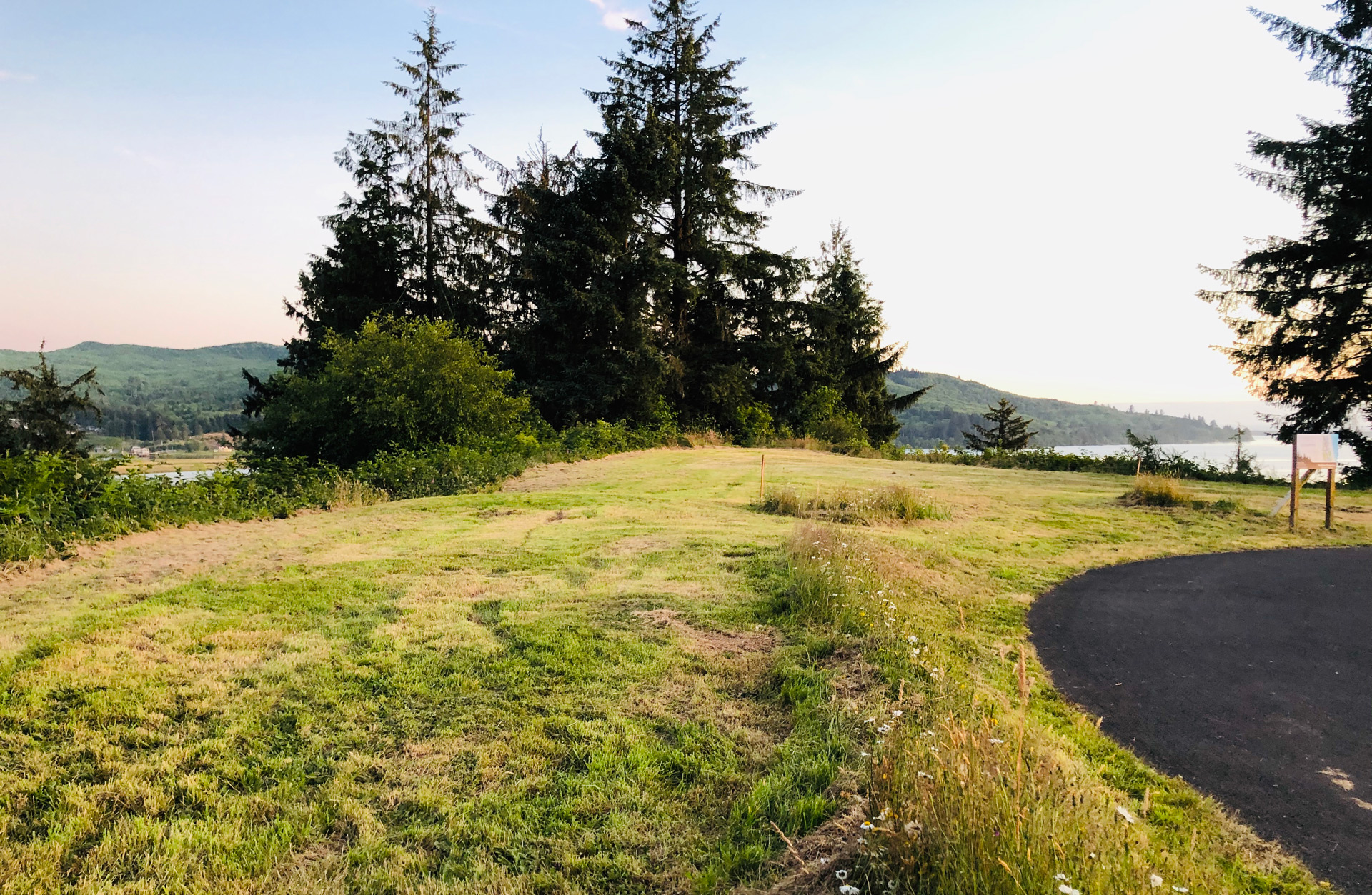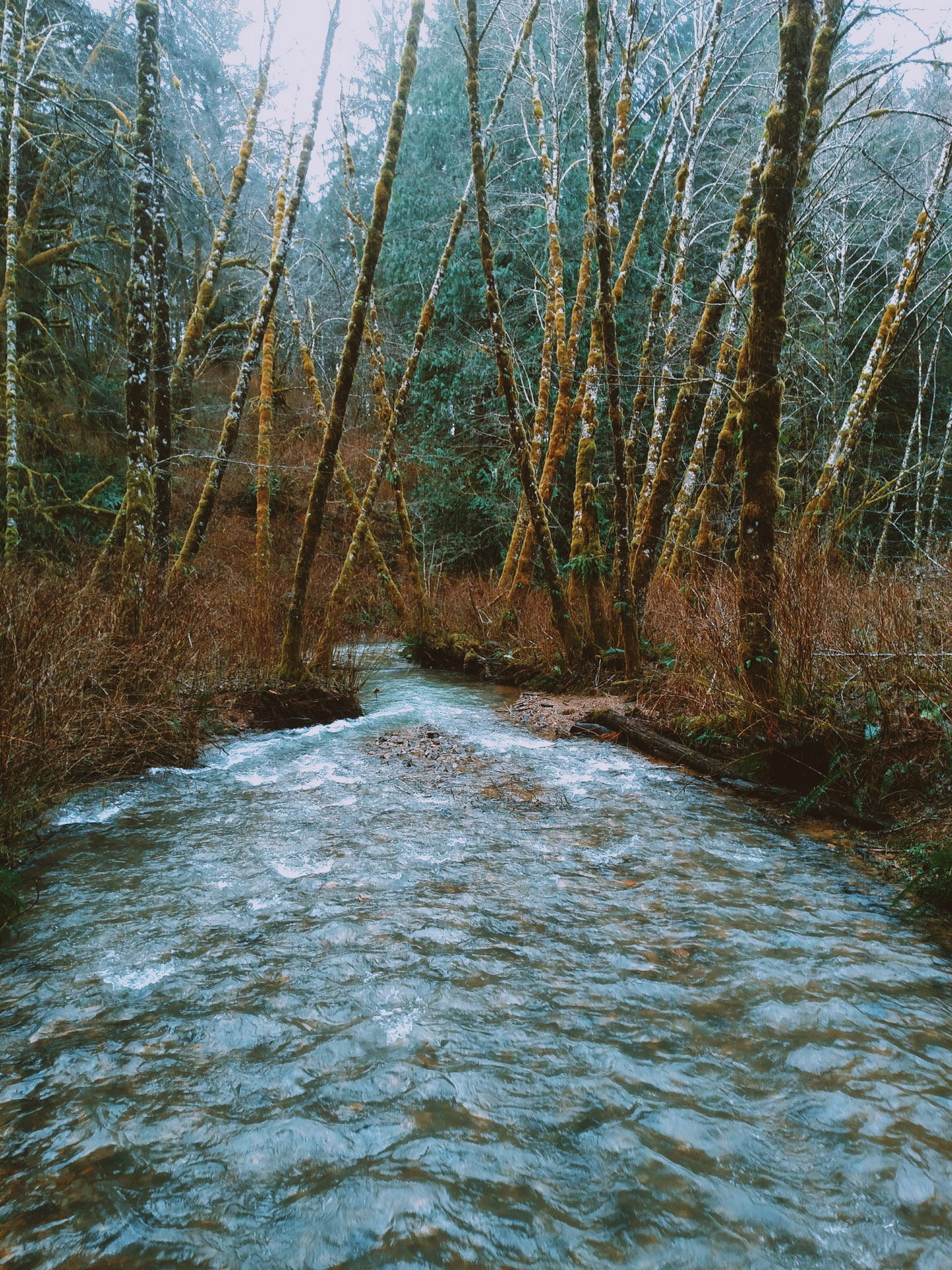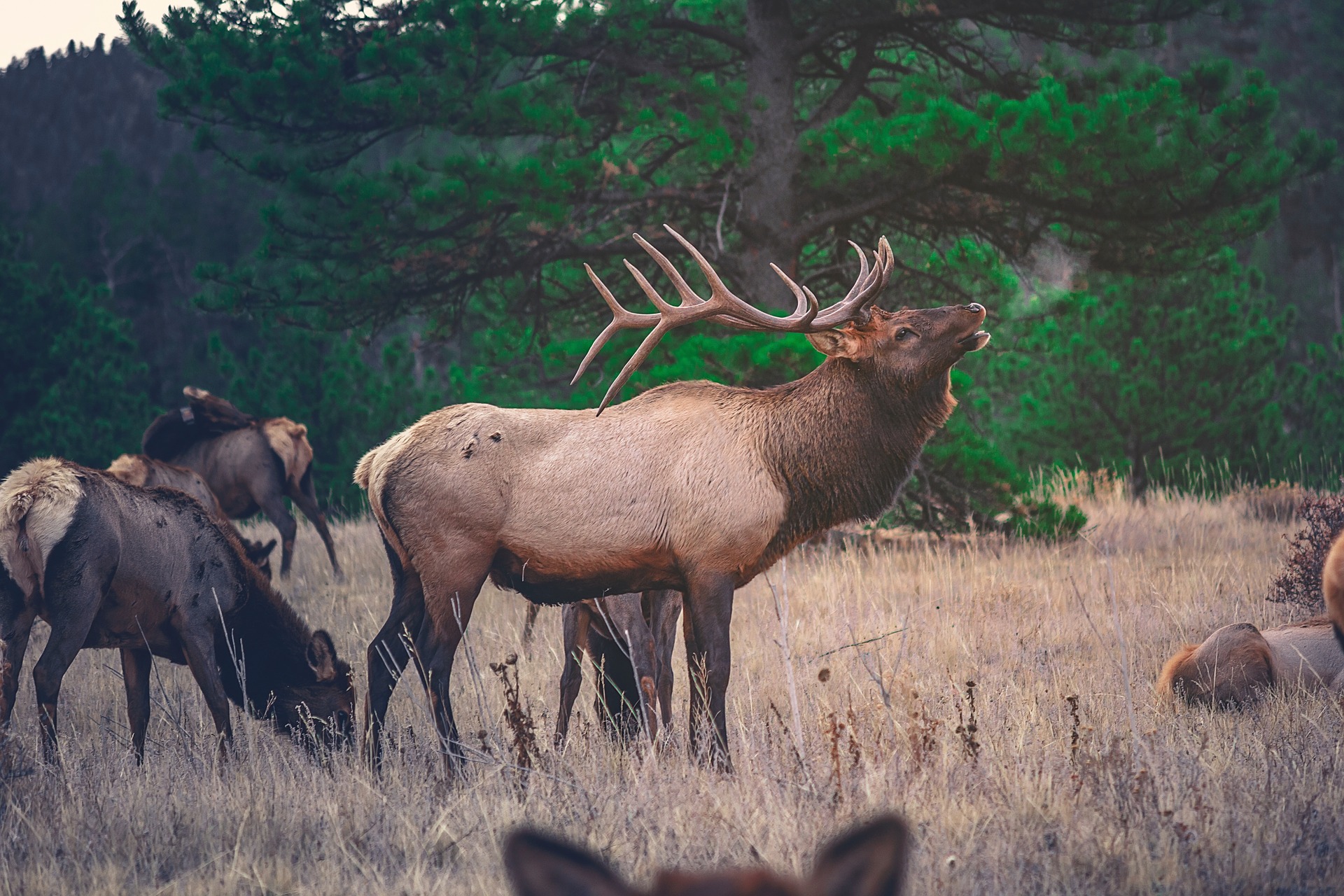
About the Point
Listening to the land...
A team of Oregonians who value the land and the beauty of the natural setting spent more than a year planning ways to retain these qualities. They called it "listening to the land". This unique development concept keeps the tall trees, the quiet and peace, an uncluttered shoreline along river and bay. More than 100 acres of meadow, tideland, creeks, dikes, and trails are set aside to be preserved in perpetuity for the conservation of the estuary, its wildlife and natural plants.
Home sites have been platted for uninterrupted views of river and bay to the south and east... mountains and valleys north and east ... and west to glorious sunsets over the Pacific Ocean. All - a balance between man and nature at Nehalem Point.

Ecology of the Point
Grazing elk and deer are commonplace. They wander in the meadows, along the beach and into your backyard, even swim in the Bay and Ocean. At higher elevations there are mountain goats, black bear, cougars. And along the adjoining beaches of Bay and Ocean are large mammals--whales, seals and sea lions.
Meadows and shoreline are abound with flora and fauna of all types. You'll treasure the moments, and come to wish that the rest of the world was so rich in wildlife.
Bird Watchers who know claim there are more than 100 varieties in or near Nehalem Point. The wetlands are home to waterfowl such as Canadian geese, ducks, herons, and osprey. Now and then a flight of swans is found in Nehalem dairy lands.
Parks and Forests
State Parks and Waysides are part of the charm of this neighborhood. Adjoining Nehalem Point is Nehalem Bay State Park. There are camp sites for tents or recreational vehicles and a community of yurts. Up highway 101 you can hike from the parking lots of Oswald West State Park to Short Sand Beach, known previously as Smugglers Cove. This park has overnight campgrounds carved out of the forest and miles of spectacular trails to Cape Falcon, Neahkahnie Falls and to the peak of Neahkahnie Mountain.
Great green forests are everywhere. There are stands of spruce, cedar, hemlock, Douglas fir and shore pine, interspersed with alder, salal, huckleberries, rhododendrons, blackberries, elderberry, wild strawberries, salmon berries, and a large variety of mushrooms. The coastal rivers and streams are inhabited by anadromous fish — coho, chinook, chum and pink salmon, as well as steelhead and sea-run cutthroat trout which are prized by fishermen.

